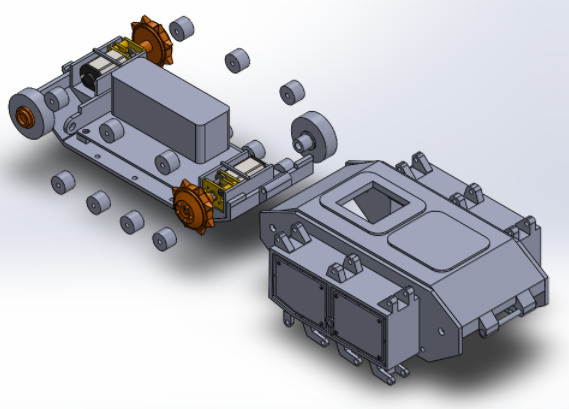After taking a closer look at the IR sensor, I realized that the sensor needed to be relocated to avoid contact with the first motor. The distance between the top panel and the front motor is not large enough to fit the sensor. Although we did consider redesigning the top, the tank will lose its overall ‘tank-like’ structure and the scaled dimensions would be skewed.
The top panel IR cut-out was relocated to the front of the bottom panel. The bottom panel was redesigned to fit the sensor between the first motor and the 3 dot board. I was able to create an IR sensor part to assemble along with the 3-dot board. The compact layout prevents the lengthening of the tank. Screw hinges were also added to the bottom panel to secure the side panels. Lastly, tank details were added to the side panels that were previously blank during PDR. The figure below shows the current layout for the components within the tank.
